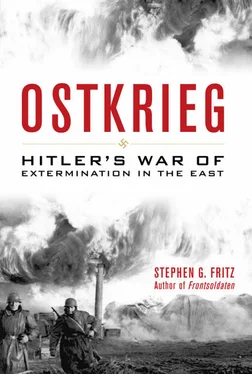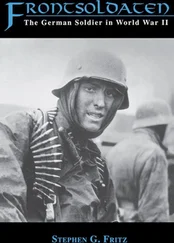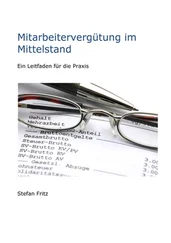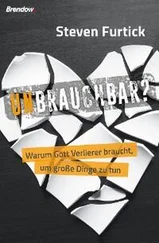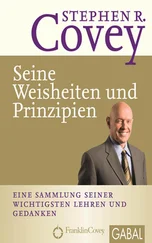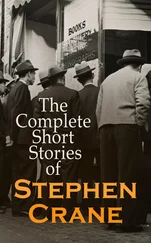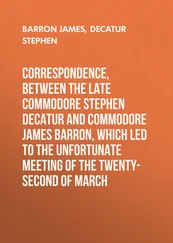The immediate dilemma for Hitler was that German rearmament could be achieved only through reckless financing that would imperil the domestic standard of living while also promising to so alarm Germany’s potential adversaries that they, too, would begin rapid rearmament. The military constraints imposed by Versailles had left Germany so weakened that even the ambitious rearmament program of 1933–1935 had left it barely able to defend itself, with offensive operations out of the question. To make good his determination to resolve the vital issue of Lebensraum no later than 1943, which he revealed to his startled military and foreign policy leaders in November 1937, Hitler contemplated peacetime military expenditures unprecedented in a Western capitalist economy (only Stalin’s actions in the Soviet Union after 1928 were comparable). In the event, this breakneck policy of rearmament did surprisingly little to increase the effective strength of the German military since it resulted in a series of production bottlenecks, raw material and foreign currency shortages, interservice feuds over allocation of scarce resources, and an inability to establish which weapons should be given priority in production. Furthermore, even if moves to absorb Austria and Czechoslovakia did not result in Western military action, aggressive German rearmament would almost certainly touch off a response by the other powers. Given its inferior economic and resource base relative to its rivals, this would inevitably touch off an economic competition that Germany ultimately could not win. Time was, thus, not on Germany’s side, as any initial military advantage would not last. Hitler, however, believed that the only solution to Germany’s dilemma lay in expansion, so the time factor merely dictated action sooner rather than later. Despite, or perhaps because of, its precarious financial, food, and raw material situation, Germany, Hitler believed, had to escape the restrictions of Central Europe through force. 19
Rearmament problems, awareness of German deficiencies in food, capital, and raw materials, irritation with the failure of Britain to act as he wanted, a growing fear of a renewed encirclement of Germany by hostile enemies: all acted to produce in Hitler a growing sense of frustration that exploded in late 1938. Since his racial obsessions infused all aspects of life and policymaking in the Third Reich, the racial-ideological dimension of policy represented the flip side of the military-strategic coin. From the beginning of his rule, Hitler faced a self-imposed “Jewish problem,” for by definition Jews were considered aliens and, thus, could not be a part of the racial community, the Volksgemeinschaft , that Hitler promised as the cornerstone of his new Germany. From the outset, as well, the solution to this Jewish problem resulted in a myriad of difficulties, ranging from the failure of the economic boycott of April 1933, to troubles associated with the emigration of German Jews, to the international condemnation of Nazi anti-Jewish actions. In all this, Hitler saw his belief confirmed that a Jewish world conspiracy actually existed and that its mission was the destruction of Germany. Typically, the more radical and aggressive Nazi policies became both at home and abroad, the more Hitler imputed hostile intentions to this alleged Jewish conspiracy. In a virtually perfect self-reinforcing spiral of paranoia, stepped-up persecution of German Jews, followed by foreign condemnation and pressure, only further convinced Hitler of the truth of his great insight about the hostility of “international Jewry.” 20
In step with foreign policy, 1938 proved to be the key year in the radicalization of racial policy as well. From 1933, Nazi policy had aimed at the emigration of all German Jews, primarily to Palestine. By 1938, however, Nazi officials regarded these efforts as a failure: fully three-quarters of the 1933 Jewish population still lived in Germany, and other countries had mounted increasing obstacles to Jewish immigration. Moreover, top Nazis themselves, influenced by Foreign Office arguments, had become more sensitive to Arab opinion and alert to the perceived danger of creating a Jewish state that would threaten Germany in the future. New ideas were mooted, including one from Reinhard Heydrich’s SD (Security Service) that the Jews be expelled to some inhospitable place such as Madagascar, an idea long circulating in European anti-Semitic circles. In any case, the final aim remained the removal of all Jews from Germany through some sort of emigration or expulsion, although Hitler, Heydrich, and others now assumed that such an action might take up to ten years. In the meantime, and characteristically, Hitler suggested to Goebbels that German Jews could be held as hostages. 21
As perhaps the most radically anti-Semitic of all the top Nazis, Joseph Goebbels seethed with impatience at the lack of progress in “cleansing” Germany, and especially Berlin, of Jews. Typically, the Nazis blamed the Jews themselves for the emigration logjam and responded in characteristic fashion: they would simply increase the incentive for the Jews to leave, through a renewed wave of physical violence and terror. The way forward had already been shown in March in Vienna, where, following the annexation of Austria, a storm of violence and popular anti-Jewish rage had been unleashed. With the tacit approval of Hitler, Goebbels had already in the summer of 1938 launched a new round of discriminatory and propagandistic assaults against the Jews of Berlin, actions that were quickly taken up in other German cities. Significantly, this radicalization of Jewish policy accompanied a sharp increase in international tensions associated with the brewing Sudeten crisis: as Hitler’s hopes for the realization of his long-anticipated alliance with Britain faded, his anger at international Jewry boiled over, for which the Jews of Germany would have to pay. Nor did the outcome of the Munich Conference at the end of September 1938 assuage the Führer. Hitler evidently had hoped to have a short war against Czechoslovakia that autumn, with the expectation that Britain and France, acquiescing once again in a fait accompli, would now grant him the desired free hand in the east. Instead, he had to be satisfied with the Sudetenland. Although foreign tensions had dissipated, the radical turn domestically had produced a menacing anti-Jewish atmosphere. 22
This tension exploded in early November. On the morning of 7 November, a seventeen-year-old Polish Jew, Herschel Grynszpan, entered the German embassy in Paris and shot Ernst vom Rath, the third legation secretary, in an act of revenge for the recent deportation of his parents. As vom Rath lingered between life and death, Goebbels orchestrated wild attacks in the German press that, much to his satisfaction, resulted on the evening of 8 November in outbreaks of anti-Jewish violence organized by local party leaders. By chance, vom Rath died on the ninth, the same day that the Nazi old guard had gathered in Munich for the annual memorial of the failed 1923 putsch. From Goebbels’s perspective, the time for action had come. That evening, following an animated conversation with the Führer, after which Hitler left the gathering unusually early, Goebbels gave a blistering anti-Jewish speech, during which he announced vom Rath’s death, noted with approval the “retaliatory” actions of the day before, and made it clear that the party should organize further anti-Jewish “demonstrations.” He then enunciated detailed instructions for what should be done as well as pressuring and prodding occasionally reluctant officials into action. The result of his efforts has come to be known as Reichskristallnacht (Night of broken glass), a shocking outburst of physical violence, destruction of property, burning of synagogues, and mass arrests of Jewish men that left the world, and many Germans, stunned. 23
Читать дальше
